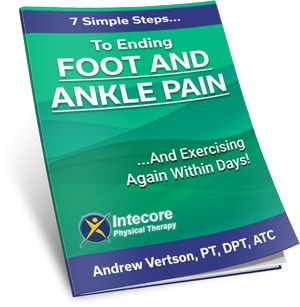
Runners knee stretches are more than just exercises; they’re a runner’s companion on the path to pain-free running. Imagine the exhilarating feeling of the wind against your face, your feet rhythmically hitting the ground, and that sense of freedom that comes with a good run. Now, imagine being held back by the sharp, nagging discomfort of runner’s knee – a scenario all too familiar for many in the running community. Runner’s knee, or patellofemoral pain syndrome, can dampen the joy of running and can put many off from running again.
But why does runner’s knee creep up on us? Often, it’s the result of overuse, improper foot alignment, or weaknesses in the muscles around the knee. This is where the magic of stretching comes into play. Targeted stretches can not only alleviate the discomfort associated with runner’s knee but can also work wonders in preventing it from returning.
This article will share with you essential runners knee stretches that every runner should incorporate into their routine. Whether you’re a seasoned marathoner or someone who enjoys casual jogs, these stretches are designed to look after your knees, ensuring that each run is more about hitting your stride and less about nursing pain.
More Posts Like This From Intecore PT:
Sprained Ankle vs Broken Ankle: How to Tell the Difference and Get Back on Your Feet
The Morning Stretches You Can Do To Avoid Pain
Can Exercise Help My Covid Recovery?
Table of Contents
Demystifying Runner’s Knee: What Every Athlete Should Know

Runner’s knee isn’t just a hurdle for the marathon enthusiast or the trail conqueror; it’s a widespread issue that can affect any runner, regardless of their mileage or experience. At its core, runner’s knee – medically known as patellofemoral pain syndrome – refers to the pain around or behind the kneecap (patella) where it articulates with the thigh bone (femur). This discomfort often arises or worsens when you’re active, especially during activities that put pressure on the knee, such as running, squatting, and climbing stairs.
So, what makes runners so prone to this condition? The repetitive impact of footfalls during running can lead to an imbalance in the muscles surrounding the knee and thigh. Over time, this imbalance can cause the patella to track incorrectly, leading to irritation of the surrounding tissues. Other contributing factors include overpronation (excessive inward foot rolling), inadequate footwear, and sudden increases in training intensity or volume.
Symptoms of runner’s knee are varied but typically include a dull, aching pain around the kneecap. Runners might also experience swelling, popping, or grinding sensations in the knee, alongside pain that intensifies after sitting for extended periods or during specific exercises.
Regular stretching helps maintain flexibility, correct muscle imbalances, and improve the alignment and function of the knee joint. By dedicating time to stretch the muscles of the thighs, hips, and calves, runners can alleviate the symptoms of runner’s knee and enhance their overall knee health and performance. So, let’s take a look at some stretches runners can do.
Top 5 Runners Knee Stretches
Incorporating specific runners knee stretches and exercises for runners knee into your routine can significantly alleviate and prevent runners knee pain. Here’s a breakdown of the top stretches every runner should know:

1. Quadriceps Stretch
- How to Perform:
- Stand near a wall or a chair for support, if needed.
- Bend one knee, bringing the heel towards your buttock.
- Grasp your ankle with the hand on the same side.
- Gently pull your ankle closer to your body, ensuring your knee points straight down.
- Hold for 20-30 seconds, feeling a stretch in the front of your thigh.
- Repeat on the other side.
- Why It Helps: This stretch relieves tension in the quadriceps, muscles that can contribute to runner’s knee when tight.
2. Hamstring Stretch
- How to Perform (Seated):
- Sit on the ground with one leg extended and the other bent, foot resting against the inner thigh of the extended leg.
- Lean forward from your hips towards the foot of the extended leg.
- Hold for 20-30 seconds, then switch legs.
- How to Perform (Standing):
- Stand and place one foot slightly in front of the other.
- Bend your back knee and lean forward, resting your hands on your bent thigh for support.
- Hold for 20-30 seconds, then switch legs.
- Why It Helps: Stretching the hamstrings prevents tightness that can alter gait and increase stress on the knees.
3. IT Band Stretch
- How to Perform:
- Stand and cross your left leg behind your right.
- Extend your right arm overhead, reaching towards the left side.
- Lean your torso to the left, feeling a stretch along the outer thigh and hip of your left leg.
- Hold for 20-30 seconds, then switch sides.
- Why It Helps: This stretch targets the iliotibial band, reducing tension that can lead to runner’s knee.
4. Calf Stretch
- How to Perform:
- Stand facing a wall, placing your hands on the wall at about chest level.
- Move one foot back, keeping it straight and pressing the heel into the floor.
- Bend the front knee slightly, keeping your back straight.
- Hold for 20-30 seconds, then switch legs.
- Why It Helps: Keeping the calf muscles flexible supports knee movement and alignment, reducing the risk of runner’s knee.
5. Hip Flexor Stretch
- How to Perform:
- Step into a lunge position with one foot in front, knee bent, and the other leg extended behind you, heel off the ground.
- Lower your hips until you feel a stretch in the front of your rear thigh.
- For a deeper stretch, raise the arm (same side as the back leg) over your head, leaning slightly to the opposite side.
- Hold for 20-30 seconds, then switch sides.
- Why It Helps: This stretch opens up the hip flexors, promoting better posture and alignment, crucial for knee health.
By regularly practicing these runners knee exercises and stretches, runners can maintain flexibility, reduce tension in key areas, and support overall knee health, keeping runner’s knee at bay.
Integrating Stretches into Your Running Routine

Incorporating runners knee stretches into your daily routine is a key step towards preventing and managing discomfort. Begin with dynamic stretches or a light jog to warm up your muscles before diving into your run. This preparation helps prevent injuries and primes your body for physical activity.
Pre-run Stretching: Focus on dynamic stretches that mimic running movements to enhance flexibility and reduce the risk of injuries. Leg swings and hip circles are great for getting your legs ready for the miles ahead.
Post-run Stretching: After your run, when your muscles are warm and more pliable, spend 5 to 10 minutes doing the runners knee stretches outlined earlier. This cooldown period helps in muscle recovery and addresses any tension built up during the run.
Consistency is Key: Incorporating these stretches regularly, even on non-running days, can significantly improve flexibility and strength over time. Aim for a daily stretching routine to keep the muscles supple and less prone to injury.
Listen to Your Body: While stretching is beneficial, it’s crucial to pay attention to your body’s signals. Never push a stretch to the point of pain. Gentle discomfort is normal, but pain is a sign that you might be overstretching. Tailor your stretching intensity to what feels right for your body, and be mindful of any day-to-day changes in flexibility or comfort levels.
When to Seek Help
While runners knee stretches are effective for prevention and mild cases, there are times when consulting a physical therapist becomes necessary. If you experience persistent knee pain that doesn’t improve with rest and stretching, or if your knee pain significantly impacts your ability to run or perform daily activities, it’s time to seek professional advice.
Signs to Watch For:
- Severe or sharp pain in the knee
- Swelling or inflammation that persists
- A popping or grinding sensation in the knee
- Difficulty bearing weight on the affected leg
A PT can offer personalized care tailored to your specific needs. Beyond runners knee stretches, they can assess your running form, footwear, and overall biomechanics to identify and address the root cause of your discomfort. They may employ advanced treatment strategies, including manual therapy, strength training programs, and even gait retraining, to ensure a comprehensive approach to recovery and prevention.
Physical therapy goes beyond immediate pain relief, focusing on long-term solutions and strategies to enhance your running performance while keeping your knees healthy and strong. If you’re facing recurring issues with runner’s knee, don’t hesitate to reach out to a physical therapist for specialized care that can help you get back to running pain-free.
Ready to Tackle Runner’s Knee with Physical Therapy?
Having made it this far, it’s clear you see the potential in physical therapy to not just alleviate the pain from runner’s knee but also to enhance your running performance.
Why not take advantage of a FREE 15 minute discovery visit with us? It’s the perfect opportunity to see firsthand how our targeted care can help improve your performance.
During this session, one of our skilled physical therapists will address any concerns, share valuable insights, and equip you with the knowledge you need to make empowered choices about your running health and overall well-being.
Booking your free discovery visit couldn’t be simpler. Just click here to fill out our quick web form, or if you prefer a more personal touch, give us a ring at (949) 565-4944.
Not quite ready to chat? That’s completely okay! Consider downloading our FREE runner’s knee guide instead. Packed with actionable tips, expert advice, and preventive strategies, it’s your secret weapon for keeping runner’s knee at bay and ensuring you’re always in top form.
Download Your Free Sports Injury Report Here.

- 7 Ways to Get Rid of Tension Headaches Naturally - July 1, 2025
- Why Are My Feet Swollen? Common Causes Explained - June 2, 2025
- What Is Restless Leg Syndrome? Symptoms, Causes, and Relief Options - May 5, 2025













